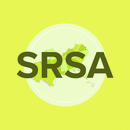Abstract
The development of an environmental identity is viewed by many as essential if we are to reorganize our societies toward ecological sustainability (Bell 2009; Clayton and Opotow 2003; Thomashow 2002). That, along with an eye toward environmental justice, was the major impetus for our graduate seminar in applied environmental sociology to partner with an elementary school in our small city of Hammond, LA, during the spring semester of 2010. After conducting focus groups with a group of fourth to sixth grade students and holding decision-making discussions with them for this community-based research (CBR) project, we went about two projects – planting native, “water loving” trees and installing rain barrels to mitigate flooding on their playground. A major goal of the project and purpose of CBR is to democratize the knowledge-making process (Strand et al. 2003). Thus, we sought to assist the students in gaining valuable skills. Specifically, students learned how to sustainably remedy their school’s drainage problem, enhance their outdoor space, encourage more communal interaction, and develop more of an ecological identity (Thomashow 2002). We also hoped to plant the seeds of future career possibilities that would benefit their communities. This paper traces the development and learning outcomes of this CBR project focused on environmental identity.
Recommended Citation
Burley, David, Natalie Shelton, Chris Daunis, Jessica Cuifi, Jamie Walker, Maria Coleman, and Bertha-Fabianna Matheu. 2012. "Imagination Enviro-Station: Students Connecting Students to Ecological Sustainability." Journal of Rural Social Sciences, 27(2): Article 4. Available at: https://egrove.olemiss.edu/jrss/vol27/iss2/4
Publication Date
8-31-2012



